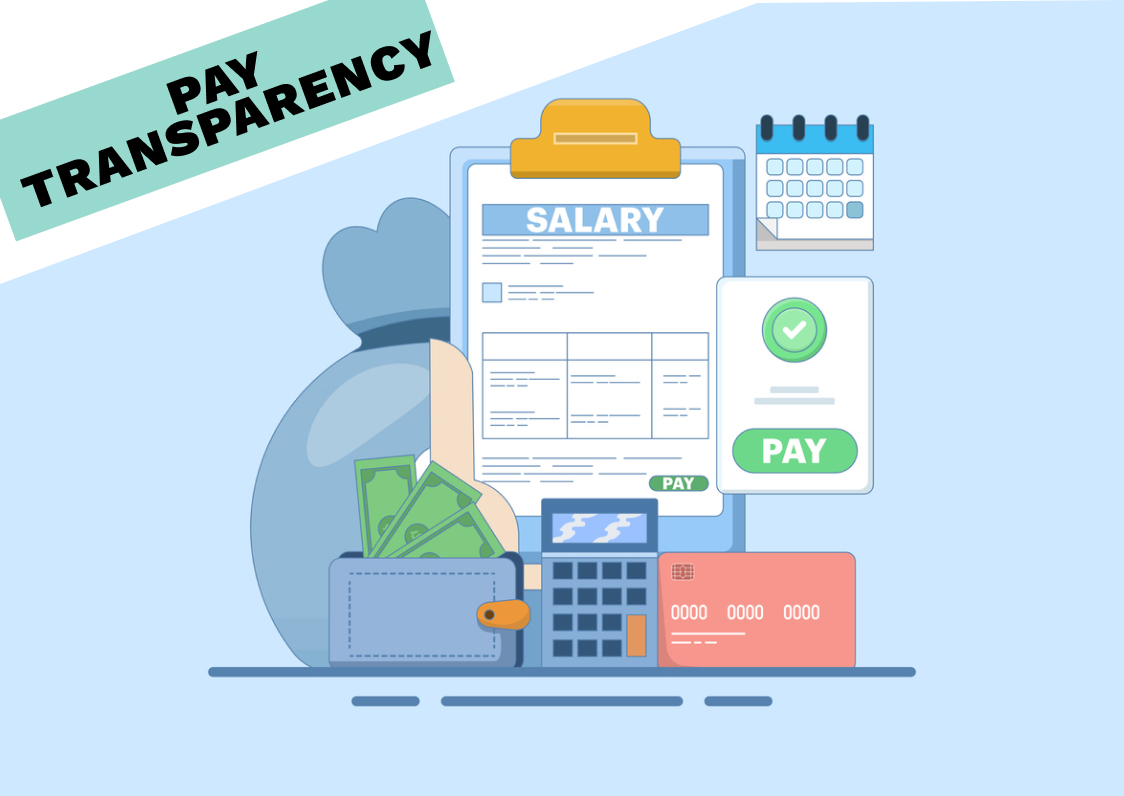It’s no secret that we’re big fans of pay transparency here at Figures.
On this blog, we’ve talked at length about the EU pay transparency directive, which will come into play across Europe by 2026. We’ve also taken deep dives into the state of pay transparency in countries including France and the UK.
But we’re curious creatures, and we got to wondering… what do pay transparency laws look like across the rest of the world?
In this article, we’ll take you through some of the different types of pay transparency legislation that’s in place in different countries — plus how the EU directive will shake things up in Europe.
Why do governments care about pay transparency?
Tackling the gender pay gap is a big priority for governments all over the world. But here’s the thing: you can’t solve a problem if you don’t know what it looks like.
That’s why many countries have put in place various types of pay transparency legislation that brings any shady pay practices out into the open, and helps governments stamp out pay discrimination.
But of course, pay discrimination is not the only factor behind the gender pay gap. There’s a whole world of subtler, harder-to-measure dynamics going on under the surface. Like the fact that women are more commonly employed in lower-paid sectors like care and hospitality, while men dominate higher-paid fields.
By properly examining the situation through pay transparency legislation, governments can get a clear idea of what’s going on — and only then can they work to fix the problem.
{{cta}}
Different types of pay transparency legislation
Below, we’ll discuss some of the most common types of pay transparency legislation in place in Europe and beyond. Keep reading to find out what will change once the EU pay transparency directive comes into play.
Gender pay gap reporting
Mandated gender pay gap reporting is one of the most common types of pay transparency legislation that we’ve found around the world. According to a report from 2022, half of the OECD’s 38 countries have systems in place for systematic, regular and compulsory wage gap reporting. Those 19 countries include Australia, Austria, Belgium, Canada, France, Denmark and the UK.
Of course, exactly what this looks like is different in every country. For example, some countries, including the UK, Canada and Australia only require this of large organisations. The threshold for reporting is 250 employees in the UK, and 100 in both Canada and Australia. In other countries, like Belgium, Denmark, Finland, France and Iceland, this number is much lower.
And the exact reporting requirements also differ. In the UK, employers only have to report their mean and median unadjusted gender pay gap, which they have to publish on their website and on a government site.
In France, on the other hand, they have to provide a lot more information. Specifically, French companies must calculate an index by scoring themselves across five key areas related to pay equality.
Most countries also have sanctions in place for companies that don’t comply with the rules — although these aren’t always enforced. In some countries, like Australia and Switzerland, companies aren’t fined for not complying but do lose the right to participate in government tenders.
Gender pay audits
Of course, gender pay gap reporting can only do so much. That’s why nine of the OECD countries listed above have gone a step further in their pay transparency legislation by requiring companies to carry out regular gender pay audits.
A gender pay audit differs from gender pay gap reporting in that its goal is not just to establish whether a gender pay gap exists, but to analyse pay gaps and the reasons behind them. Typically, this means assessing things like:
- The processes used to determine pay rates
- Job evaluations or classification systems
- Detailed information about the differences in pay between men and women
- The proportion of men and women in different positions
This type of legislation often comes with a requirement for companies to develop a plan to correct their gender pay gap if they find one.
Like with gender pay gap reporting, there are big differences in how this works in each country. For example, the threshold for having to carry out regular audits ranges from 10 employees (Sweden and Canada) to 100 (Switzerland).
Rights to information for employees
A number of countries have also introduced legislation that gives employees the right to request information about pay. Generally, employees can ask for the pay levels of their colleagues in comparable roles, broken down by sex, in order to find out if any pay discrimination is going on.
But unsurprisingly, the way this works in practice is very different from one country to the next. In Germany and Spain, for example, employees can only request this information through a workers’ representative, unless the company has no workers’ representation. In Germany, employers only have to disclose the requested information if there are at least six comparators of the opposite sex employed at the company.
Salary transparency for jobseekers
As we’ve discussed before, disclosing salary information to jobseekers is an important aspect of pay transparency. This practice not only saves time for everyone, but it also demonstrates a commitment to fair and equitable pay. Needless to say, at Figures, we believe this is the right thing to do.
And several US states, including Colorado, California and New York have put in place laws that require employers to disclose at least a salary range on their job descriptions. At the moment, this type of legislation is relatively uncommon outside of North America. But, as we’ll discuss at the end of this article, that’s about to change.
Equal pay certifications
Equal pay certifications are a rare but interesting measure related to pay transparency. The idea is to allow employees, candidates and the general public to see at a glance whether or not a company operates with fair pay practices.
At the moment, the best example is Iceland, where companies can be assessed by an independent body to receive an equal pay certification (or Jafnlaunavottun). The certification is valid for three years, at which point the company has to be reassessed if they want to keep it.
Though it’s not quite the same thing, this concept reminded us of an interesting little nugget from the EU pay transparency directive, which says that:
“Member States may acknowledge employers that are not subject to the reporting obligations set out in this Directive, which voluntarily report on their pay, for instance by means of a pay transparency label.”
In other words, companies that voluntarily report on their gender pay gap could be rewarded with a sort of badge of honour. Like the Jafnlaunavottun in Iceland, this will be an effective way of demonstrating their commitment to fair pay to candidates and employees.
Bonus: Salary history bans
Salary history bans are not technically about pay transparency (if anything, they’re kind of the opposite). But they’re usually talked about as part of the same conversation because they have the same objective: to end pay inequity.
Essentially, salary history bans mean that employers are not allowed to ask potential job candidates about their previous salary, or use that information to determine the level of compensation they offer them.
The reason behind these rules is simple: basing an employee’s salary on their previous pay only entrenches unfair pay and worsens the gender pay gap. That’s the reason that many companies (including Figures) make it their policy not to ask, even if it’s not (yet) a legal obligation.
At the moment, these rules are much more common in the US than in Europe: states including Maryland, Connecticut, Washington, Colorado and California all have some sort of limits on potential employers asking candidates about salary history.
{{cta}}
The impact of the EU Pay Transparency Directive
Here’s a fact: Everything we know about pay transparency in Europe is about to change. That’s because of the EU pay transparency directive, which was signed into law in the Spring of 2023.
The rules set out in the directive will come into force in the EU’s 27 member states over the next two years. If you need a quick refresher, here’s what that will mean:
- Pay transparency for jobseekers: Employers will have to provide a salary or salary range to job candidates before the interview stage.
- Gender pay gap reporting: Employers with 150+ employees will have to report on their gender pay gap every three years, and those with 250+ employees will have to report every year.
- Joint pay assessments: If an employer finds a pay gap of 5% or more, they’ll have to carry out a joint pay assessment with workers’ representatives.
- Employee rights to request information: Employees will have the right to request information on average pay levels for men and women doing the same work or ‘work of equal value’.
- Salary history bans: Employers will be prohibited from asking job applicants about their salary history.
- Burden of proof shifting to employer: In pay discrimination cases, it will be up to the employer to prove that they have not discriminated against an employee, instead of the other way around.
In other words, almost every measure we’ve listed in this article will come into play across the EU in one fell swoop. One thing is for sure: we’re entering the era of pay transparency. And, here at Figures, we couldn’t be more excited about it.
{{cta}}
Learn more about pay transparency in Europe and beyond
Want to find out more about pay transparency around the world? You’re in the right place! Here are a few articles from our archive to get you started:
- Preparing for Pay Transparency: 6 Key Insights From Our Webinar
- Salary Transparency in Job Ads: The Pros and Cons
- Demystifying Pay Transparency: The Complete HR Professionals' Guide
- 5 Pay Transparency Myths Debunked
- What the EU Can Learn From US Pay Transparency Laws
- The EU Pay Transparency Directive Series: What do you need to know now?
Summarize this article with AI
No time to read it all? Get a clear, structured, and actionable summary in one click.




![How Countries Are Implementing the EU Pay Transparency Directive [Updated December 2025]](https://cdn.prod.website-files.com/67d7e1e2f12d2942bb8d0309/6800da19bf0ad5c3d89c6d56_67e2c2cbef618bc98559ce0c_679b9fd8dac8fc3762b7e816_General%252520Topic.avif)

